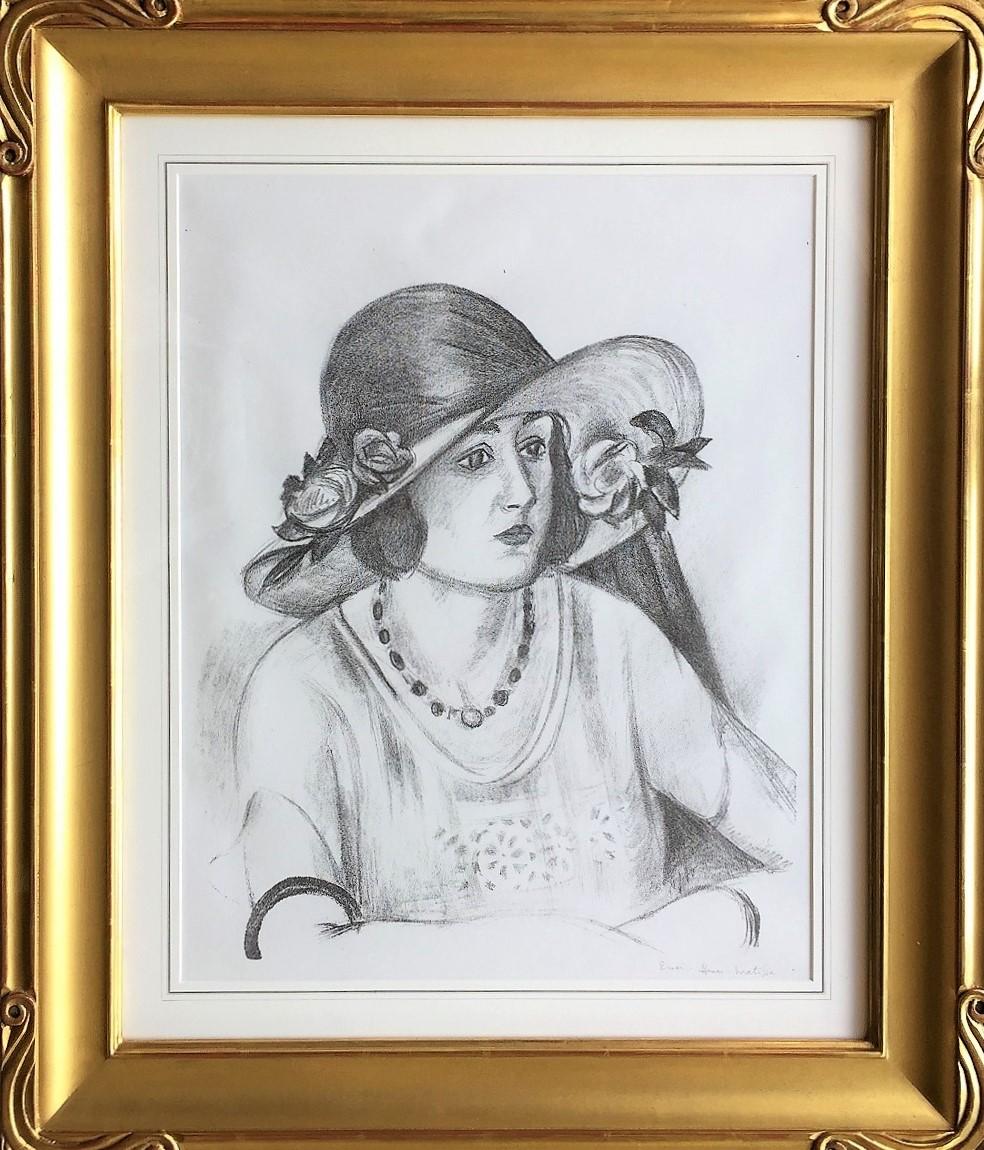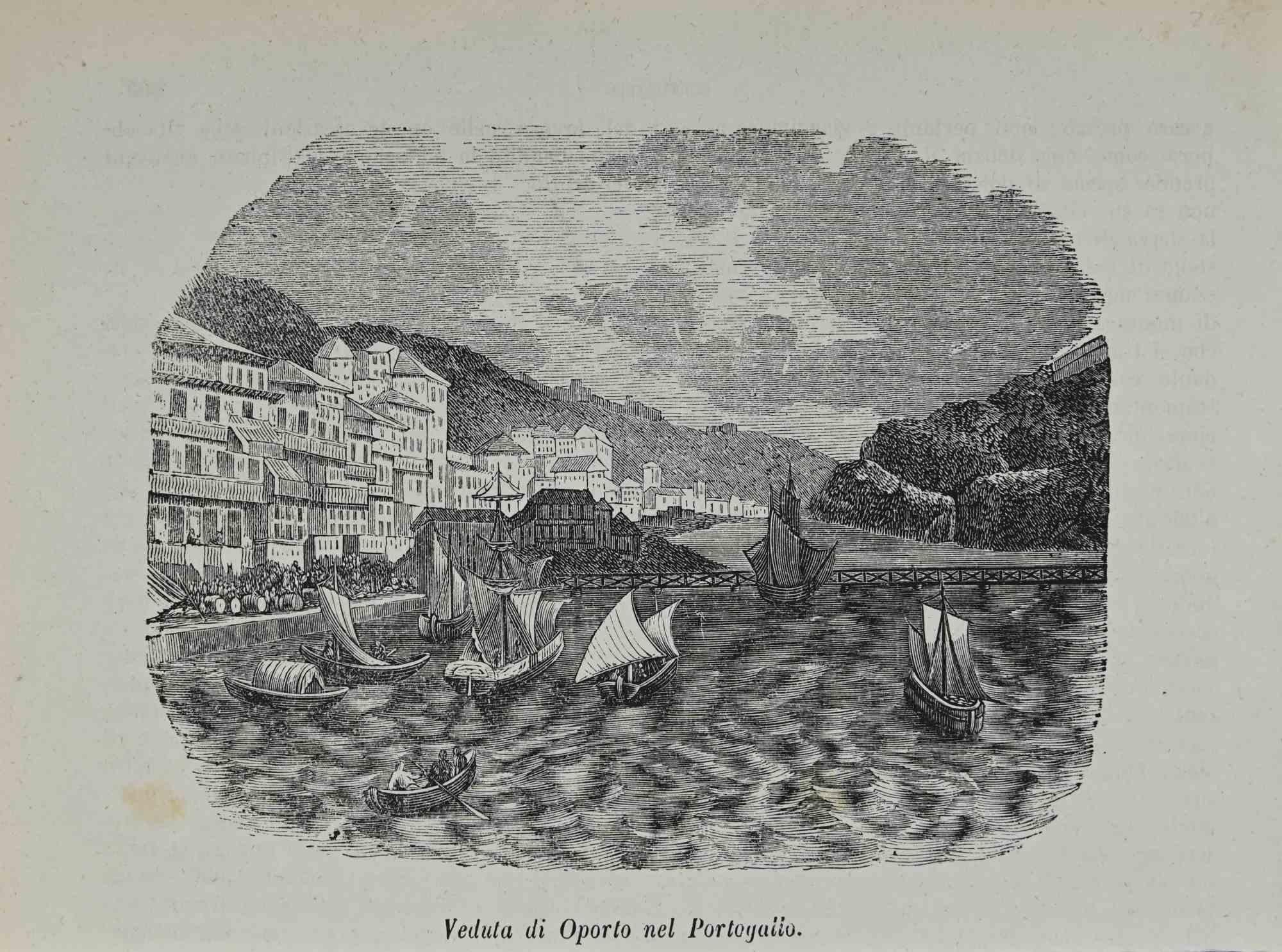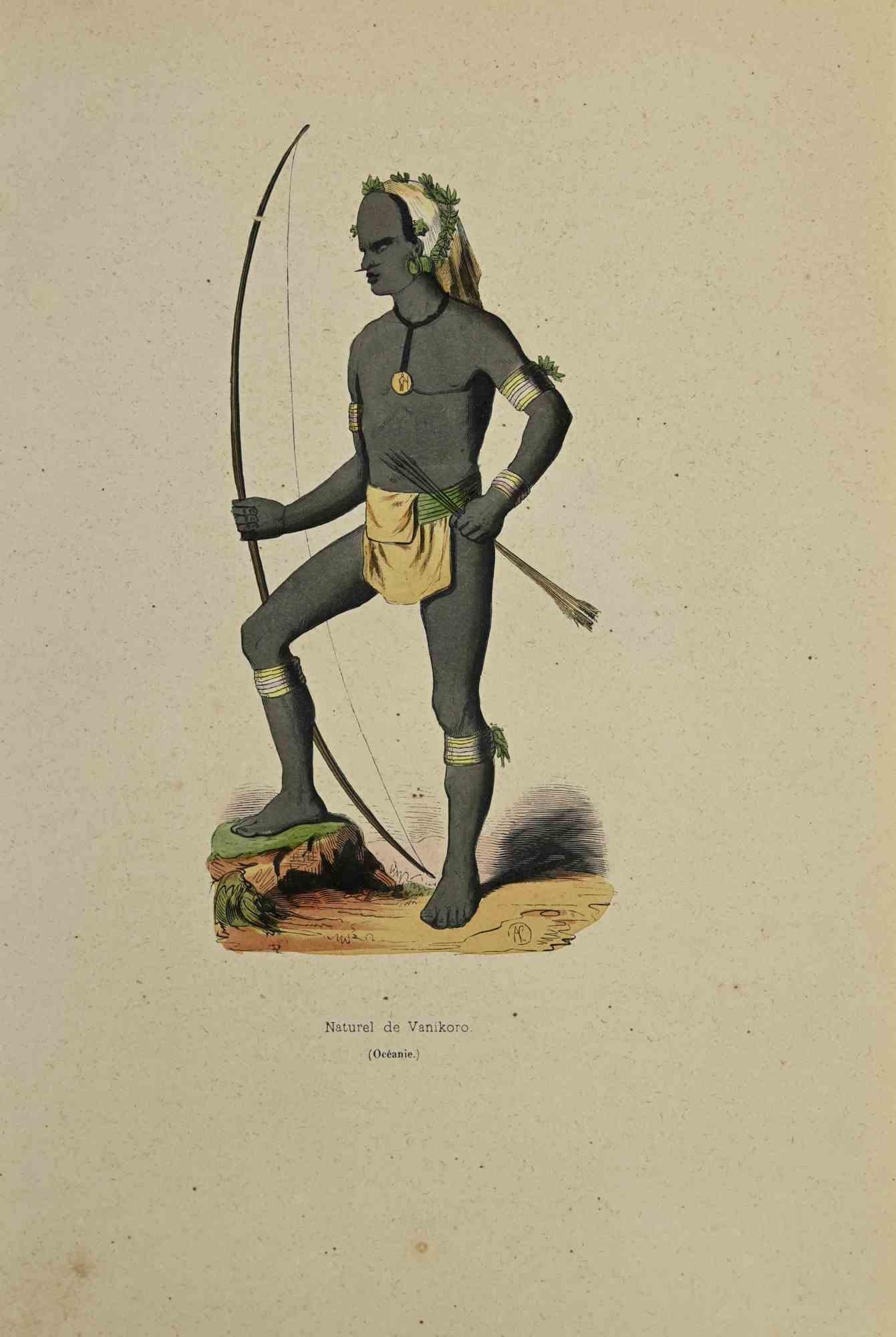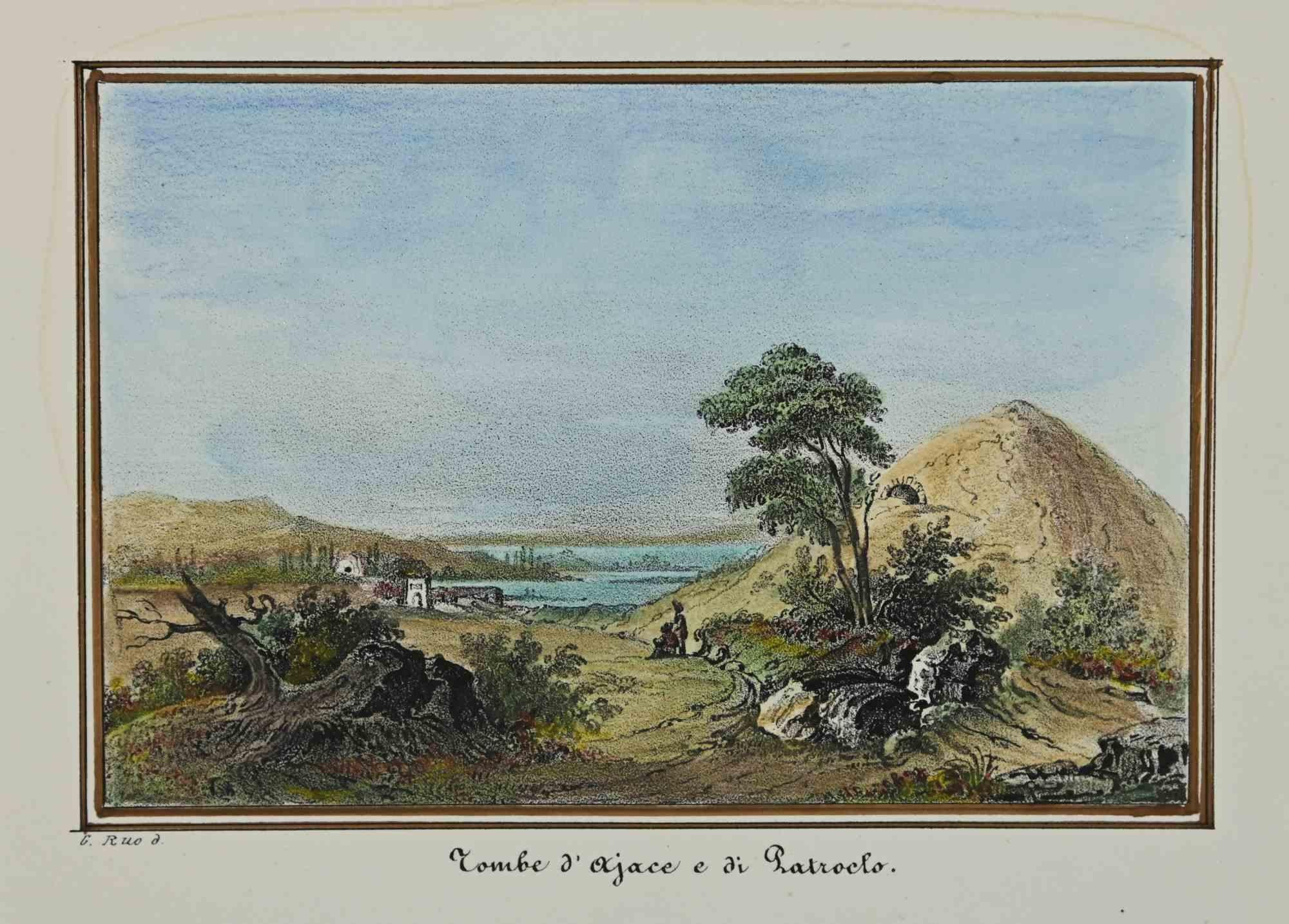Items Similar to New England Locust Tree
Want more images or videos?
Request additional images or videos from the seller
1 of 10
Tessa BeaverNew England Locust Treec.1980
c.1980
About the Item
This artwork titled "New England Locust Tree" c.1980 is an original color lithograph with embossing on wove paper by noted British artist Tessa Beaver, 1932-2018. It is hand signed, titled and numbered 39/125 in pencil by the artist. The image size is 21.25 x 20.25 inches, the sheet size is 24.75 x 20.25 inches. It is in excellent condition, has never been framed.
About the artist:
Tessa Beaver was born in Hampstead, London in 1932, the first of five children of Virginia (nee Virginia Maxwell Ayrton, daughter of Maxwell Ayrton) and Courtenay Theobald, the architect (Maxwell Ayrton's practice partner, as well as son-in-law).
The Ayrton family originated in Yorkshire, though Tessa Theobald descended from a branch long-resident in Cheshire. Her forebear Edward Ayrton was mayor of Ripon in 1760, and laid the foundations for the family's subsequent prominence.
Beaver studied at the Slade School of Art, achieving her Diploma in Fine Art in 1953. She studied etching for a year afterwards with John Buckland-Wright.
Her career began, under her birth name of Tessa Theobald, as an illustrator and designer of book jackets. She became the art editor of children's books at Oxford University Press and later at Thomas Nelson.
She is also known for her painting and etching.
Following her marriage to Harold Beaver, the couple took up a post in Kenya. There, she travelled extensively around the country, developing her knowledge of woodblock printing. On her return to UK, she taught printmaking at Mid-Warwickshire College.
In 1989 she was commissioned to create a set of prints to mark Birmingham's centenary.
In 2014 a large exhibition of her work at Leamington Spa Art Gallery & Museum was accompanied by major monograph on her work My Craft or Sullen Art (ISBN 1872940064). She exhibited at international exhibitions of printmaking in Brazil, China, Poland, Italy and Netherlands. Beaver's prints have been shown at the Society of Wood Engravers, the Royal Society of Painters, Etchers and Engravers, the Royal Academy Summer Exhibitions. She has held solo shows at the University of Warwick, the Lantern Gallery in Manchester, St. Michael's Gallery in Derby, the Quadrangle Gallery in Oxford and the Mignon Gallery in Bath.
She was a prize winner at the 5th Seoul International Print Biennale in South Korea.
- Creator:Tessa Beaver (1932, British)
- Creation Year:c.1980
- Dimensions:Height: 24.75 in (62.87 cm)Width: 20.25 in (51.44 cm)Depth: 0.01 in (0.26 mm)
- Medium:
- Movement & Style:
- Period:
- Condition:
- Gallery Location:San Francisco, CA
- Reference Number:
undefined
About the Seller
5.0
Platinum Seller
These expertly vetted sellers are 1stDibs' most experienced sellers and are rated highest by our customers.
Established in 1999
1stDibs seller since 2017
685 sales on 1stDibs
Typical response time: 1 hour
- ShippingRetrieving quote...Ships From: San Francisco, CA
- Return PolicyA return for this item may be initiated within 7 days of delivery.
More From This SellerView All
- White PineLocated in San Francisco, CAThis artwork titled " White Pine" c.1980 is an original color lithograph with embossing on wove paper by noted British artist Tessa Beaver, 1932-2018. It ...Category
Late 20th Century Modern Figurative Prints
MaterialsLithograph
- New England TamarackLocated in San Francisco, CAThis artwork titled " New England Tamarack" c.1980 is an original color lithograph with embossing on wove paper by noted British artist Tessa Beaver, 1932...Category
Late 20th Century Modern Figurative Prints
MaterialsLithograph
- Flowering Red MapleLocated in San Francisco, CAThis artwork titled " Flowering Red Maple" c.1980 is an original color lithograph with embossing on wove paper by noted British artist Tessa Beaver, 1932-201...Category
Late 20th Century Modern Figurative Prints
MaterialsLithograph
- "Mujer Con Sombrero" Large lithographBy Rufino TamayoLocated in San Francisco, CAThis artwork titled "Mujer Con Sombrero (Woman with Hat)" 1972 is a large original colors lithograph on Arches paper by renown Mexican artist Rufino Tamayo, 1899-1991. It is hand signed and numbered 81/100. in pencil by the artist. The artwork size 36.35 x 25.85 inches, sheet size is 37.25 x 26.25 inches, framed size is 52.25 x 40.5 inches. Published by Transworld Art, New York , Printed by Bank Street Atelier, New York. Referenced and pictured in the artist's catalogue raisonne by Pereda, plate #132 page 123. Custom framed in a wooden black and silver frame, with silver bevel and fabric matting. It is in excellent condition. Will provide the buyer with a certificate of authenticity from our gallery and photocopy of the pages related to this artwork from the artist's catalogue raisone. About the artist: A native of Oaxaca in Southern Mexico, Rufino Tamayo's father was a shoemaker, and his mother a seamstress. Some accounts state that he was descended from Zapotec Indians, but he was actually 'mestizo' - of mixed indigenous/European ancestry. (Santa Barbara Museum of Art). He began painting at age 11. Orphaned at the age of 12, Tamayo moved to Mexico City, where he was raised by his maternal aunt who owned a wholesale fruit business. In 1917, he entered the San Carlos Academy of Fine Arts, but left soon after to pursue independent study. Four years later, Tamayo was appointed the head designer of the department of ethnographic drawings at the National Museum of Archaeology in Mexico City. There he was surrounded by pre-Colombian objects, an aesthetic inspiration that would play a pivotal role in his life. In his own work, Tamayo integrated the forms and tones of pre-Columbian ceramics into his early still lives and portraits of Mexican men and women. In the early 1920s he also taught art classes in Mexico City's public schools. Despite his involvement in Mexican history, he did not subscribe to the idea of art as nationalistic propaganda. Modern Mexican art at that time was dominated by 'The Three Great Ones' : Diego Rivera, Jose Clemente Orozco, and David Alfaro Siqueros, but Tamayo began to be noted as someone 'new' and different' for his blending of the aesthetics of post Revolutionary Mexico with the vanguard artists of Europe and the United States. After the Mexican Revolution, he focused on creating his own identity in his work, expressing what he thought was the traditional Mexico, and refusing to follow the political trends of his contemporary artists. This caused some to see him as a 'traitor' to the political cause, and he felt it difficult to freely express himself in his art. As a result, he decided to leave Mexico in 1926 and move to New York, along with his friend, the composer Carlos Chavez. The first exhibition of Tamayo's work in the United States was held at the Weyhe Gallery, New York, in that same year. The show was successful, and Tamayo was praised for his 'authentic' status as a Mexican of 'indigenous heritage', and for his internationally appealing Modernist aesthetic. (Santa Barbara Museum of Art). Throughout the late thirties and early forties New York's Valentine Gallery gave him shows. For nine years, beginning in 1938, he taught at the Dalton School in New York. In 1929, some health problems led him to return to Mexico for treatment. While there he took a series of teaching jobs. During this period he became romantically involved with the artist Maria Izquierdo...Category
Mid-20th Century Modern Figurative Prints
MaterialsLithograph
- Girls Seated at Desk IXBy Henry MooreLocated in San Francisco, CAArtist: Henry Moore (British, 1898-1986) Title: Girls Seated at Desk IX Year: 1974 Medium: Color lithograph Edition: Numbered 40/50 in pencil Paper: Wove Paper size: 20.25 x...Category
Late 20th Century Modern Figurative Prints
MaterialsLithograph
- La Negra (The Black Woman)By Rufino TamayoLocated in San Francisco, CAThis artwork titled "La Negra (The Black Woman)" from the suite "The Mujeres File" 1969 is an original colors lithograph on B.F.K. Rives paper by renown Mexican artist Rufino Tamayo, 1899-1991. It is hand signed and numbered 150/150 in pencil by the artist. The image size is 26.85 x 21.25 inches, sheet size is 29.5 x 22.15 inches, framed size is 42 x 35 inches. Published by Touchtone Publisher, New York, printed by Ateliers Desjobert, Paris. Referenced and pictured in the artist's catalogue raisonne by Pereda, plate #109 page 107. Custom framed in a wooden silver frame, with silver spacer and fabric matting. It is in excellent condition. About the artist: A native of Oaxaca in Southern Mexico, Rufino Tamayo's father was a shoemaker, and his mother a seamstress. Some accounts state that he was descended from Zapotec Indians, but he was actually 'mestizo' - of mixed indigenous/European ancestry. (Santa Barbara Museum of Art). He began painting at age 11. Orphaned at the age of 12, Tamayo moved to Mexico City, where he was raised by his maternal aunt who owned a wholesale fruit business. In 1917, he entered the San Carlos Academy of Fine Arts, but left soon after to pursue independent study. Four years later, Tamayo was appointed the head designer of the department of ethnographic drawings at the National Museum of Archaeology in Mexico City. There he was surrounded by pre-Colombian objects, an aesthetic inspiration that would play a pivotal role in his life. In his own work, Tamayo integrated the forms and tones of pre-Columbian ceramics into his early still lives and portraits of Mexican men and women. In the early 1920s he also taught art classes in Mexico City's public schools. Despite his involvement in Mexican history, he did not subscribe to the idea of art as nationalistic propaganda. Modern Mexican art at that time was dominated by 'The Three Great Ones' : Diego Rivera, Jose Clemente Orozco, and David Alfaro Siqueros, but Tamayo began to be noted as someone 'new' and different' for his blending of the aesthetics of post Revolutionary Mexico with the vanguard artists of Europe and the United States. After the Mexican Revolution, he focused on creating his own identity in his work, expressing what he thought was the traditional Mexico, and refusing to follow the political trends of his contemporary artists. This caused some to see him as a 'traitor' to the political cause, and he felt it difficult to freely express himself in his art. As a result, he decided to leave Mexico in 1926 and move to New York, along with his friend, the composer Carlos Chavez. The first exhibition of Tamayo's work in the United States was held at the Weyhe Gallery, New York, in that same year. The show was successful, and Tamayo was praised for his 'authentic' status as a Mexican of 'indigenous heritage', and for his internationally appealing Modernist aesthetic. (Santa Barbara Museum of Art). Throughout the late thirties and early forties New York's Valentine Gallery gave him shows. For nine years, beginning in 1938, he taught at the Dalton School in New York. In 1929, some health problems led him to return to Mexico for treatment. While there he took a series of teaching jobs. During this period he became romantically involved with the artist Maria Izquierdo...Category
Mid-20th Century Modern Figurative Prints
MaterialsLithograph
You May Also Like
- La Capeline de Paille d'Italie (The Italian Straw Hat).By Henri MatisseLocated in Storrs, CTLa Capeline de Paille d'Italie (The Italian Straw Hat). 1923. Lithograph. Duthuit 430. 17 3/4 x 15 3/4 (sheet 23 1/8 x 17 7/8). Trial proof, apart fr...Category
Early 20th Century Modern Portrait Prints
MaterialsLithograph
- Bone Disease - Lithograph By Ottavio Muzzi - 1843Located in Roma, ITBone Disease is a lithograph hand colored by Ottavio Muzzi for the edition of Antoine Chazal, Human Anatomy, Printers Batelli and Ridolfi, 1843. The work belongs to the Atlante gene...Category
1840s Modern Figurative Prints
MaterialsLithograph
- View of Porto in Portugal - Lithograph - 1862Located in Roma, ITView of Porto in Portugal is a lithograph realized in 1864. Good conditions. The artwork belongs to the Suite Uses and customs of all the peoples of the universe, or History of th...Category
1840s Modern Figurative Prints
MaterialsLithograph
- Naturel de Vanikoro - Lithograph by Auguste Wahlen - 1844Located in Roma, ITNaturel de Vanikoro is a hand colored lithographs realized by Auguste Wahlen in 1844. good conditions. the artwork belongs to the Suite Moeurs, usages et costumes de tous les peupl...Category
1840s Modern Figurative Prints
MaterialsLithograph
- Tombs of Ajax and Patroclus - Lithograph - 1862Located in Roma, ITTombs of Ajax and Patroclus is a lithograph realized in 1862. Good conditions. The artwork belongs to the Suite Uses and customs of all the peoples of the universe, or History of t...Category
1840s Modern Figurative Prints
MaterialsLithograph
- Femme de Jalapa - Lithograph by Auguste Wahlen - 1844Located in Roma, ITFemme de Jalapa is a hand colored lithographs realized by Auguste Wahlen in 1844. Good conditions. The artwork belongs to the Suite Moeurs, usages et costumes de tous les peuples ...Category
1840s Modern Figurative Prints
MaterialsLithograph
Recently Viewed
View AllMore Ways To Browse
England At
New England
New England Modern
Large Wood Trees
Modern Large Tree
England Etching
Vintage Book Jacket
Vintage Book Jackets
Oxford England
Vintage Children Artwork
Yorkshire England
Chinese Prints Set
Bath England
Vintage Children Book Prints
Framed Lithograph England
Family Bath
Vintage Chinese Lanterns
Chinese Lantern Vintage Chinese





